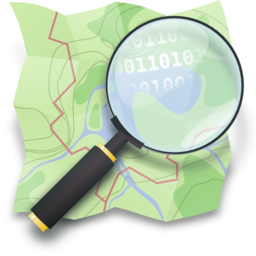In a North American context, one typically distinguishes between the street and the overall streetscape. Everything between the curbs or verges – traffic lanes, street parking stalls, crosswalks, bike lanes, shoulders, even pedestrian lanes – would be considered part of the street. By contrast, a sidewalk, shared use sidepath, or median greenway lie within the corridor but not within the street. (COVID-era outdoor dining spaces can be either, depending on the physical location.)
This can have implications for guidance instructions. Most pedestrian routing profiles currently say things like, “Turn left onto name.” Ideally, the router would reserve that phrasing for when the pedestrian needs to literally share the road with cars. For a more typical sidewalk, a better phrase would be, “Turn left and follow name.”
The word “follow” is doing some work here: it’s the same word a router would ideally use when telling a motorist to follow the signs for a route instead of enumerating the specific turns. In both cases, the “follow” instruction is an abstraction over the routing network.
The biggest problem with pedestrian guidance is that it fails to abstract away the nitty-gritty details of individual routing edges in favor of the overall corridors you’re supposed to follow. The lack of street names is just a symptom of this shortcoming. A big reason is that many routing engines predate the practice of mapping sidewalks as separate ways, so this practice wasn’t considered in the original design. Your router might be more nimble than that; I don’t know.
In a previous job, I supported a team based in Toronto that was developing a wearable navigation device. It lacked a screen or had a very tiny screen, so it relied entirely on voice guidance. The granularity was problematic enough that they ended up configuring their application to ask Valhalla for pedestrian routes that avoid sidewalks like the plague. (This is a publicly documented option that the FOSSGIS profile on osm.org uses too, but not as aggressively.) The user was expected to understand that any reference to the street actually referred to the sidewalk. Street names might’ve enriched the default routes over sidewalks, but when “Turn left onto name,” could be referring to a tiny finagle in the sidewalk rather than a real street intersection, the result can be very confusing.
![]() . That doesn’t include motorways, and by default it does not include trunk roads (though I ensure that those are pedestrian-routable on my maps if there is a sidewalk tag).
. That doesn’t include motorways, and by default it does not include trunk roads (though I ensure that those are pedestrian-routable on my maps if there is a sidewalk tag).



